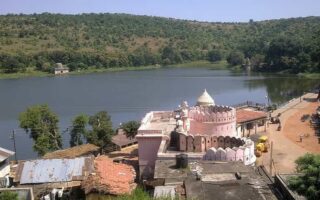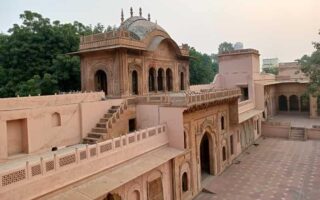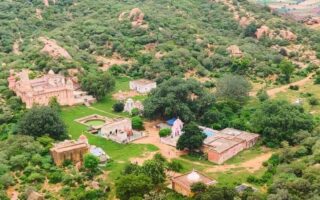The Culture of Haryana is replete with vast number of monuments that have remained a memorable part of history of the state. These monuments of Haryana are famous for their architectural beauty. They belong to several different dynasties that were once part of rich cultural heritage. They include tombs of famous rules, palaces built by mighty emperors, and forts constructed for evading enemy attacks. The size, plan, and architecture of these tourist places differ from each other in several ways.
History of Haryana is laden with the glorious history of dynasties that ruled here in different era. Linked with different legends and epic stories, different monuments were built to keep them alive. Not only this, rulers of the state laid down the foundation of these structures to commemorate their victories in battle or to establish the marks of supremacy over others. As the state is rich in different religions, monuments like palaces, gates, towers, and tombs belonging to these religions were erected from time to time.
Gujri Mahal is one of the famous Monuments of Haryana that is a symbol of love of Feroz Shah Tughlaq for Gujari Rani. Laden with Islamic architecture, the palace is built in limestone. Cantonment Church Tower, a 35 meter high building that is adorned with a monumental cross, is worth visiting by the lovers of architecture. Tomb of Kalander Shah was built to commemorate the deeds of the saint whose teaching were a source of inspiration to many.
Tomb of Ibrahim Lodi is another monument that carries huge importance with it. Made up of lakhori bricks, the tomb was renovated in colonial period by British. Samadhi of Tara Chand Maharaj is housed in yet another magnificent structure called Star Monument and is built in the shape of a pyramid. It is among the most spectacular monuments of Haryana. Kala Amb is a memorial built in remembrance of those soldiers who laid down their lives in Panipat’s third battle.
Chor Gumbad, previously a hiding place for thieves, is popular for its haunting appearance. It is, in fact, the tomb of Jamal Kahn which was built by him. Another monument that is worth mentioning is palace of Feroz Shah. Made up of masonry and lime plaster, the structure rests on a number of pillars belonging to Hindu Temples. Barsi Gate was built by Alauddin Khilji in 14th century. It is one of the 5 gates of Hansi which are still extant. Mausoleum of Sheikh Chehli was constructed during the reign of Sher Shah Suri. The tomb is octagonal in shape and rests on a cylindrical structure.
Other monuments of Haryana include Jal Mahal, Tomb of Quli Khan, and Chatta Rai Mukund. These buildings are worth visiting by the tourists.
Badli Sarai
- Location: Near Delhi, Haryana
- Period: Mughal Era
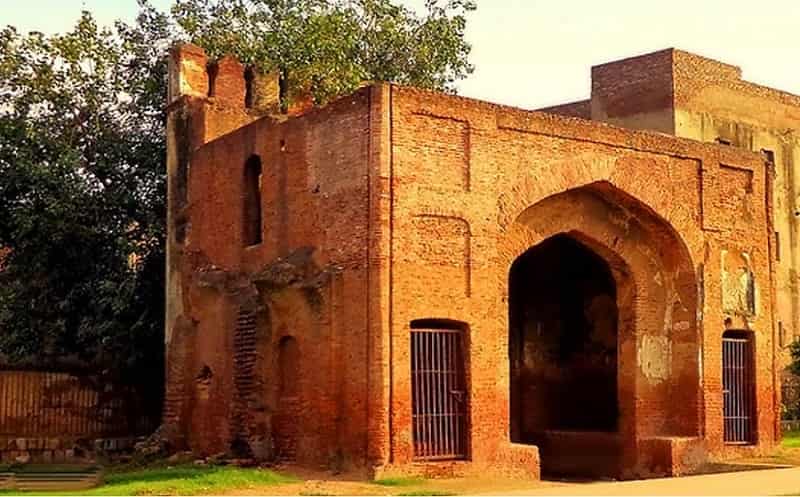
Located at a short distance from Delhi, Badli Sarai is a building that belongs to Mughal era. Built in later Mughal period, this monument lies on the road connecting Delhi to Karnal. Most part of the Sarai including some of its arcaded rooms has destroyed over time. The only part that has survived consists of two gateways. Earlier the famous Grand Trunk Road used to pass between these gateways.
Badli Sarai was a battleground of a war that took place on June eighth, 1857. The battle took place between Gordon and rebels.
Another magnificent structure that forms part of Badli Sarai is a huge column of sandstone that lies at a distance of 500 meters in north direction. It was erected as homage to Gordon Highlanders, a British infantry regiment that was formed in 1881. It was, in fact, formed by the amalgamation of a number of regiments. The regiment served in India, Egypt, and in South Africa. The Sarai was a battleground of a war that took place on June eighth, 1857. The battle took place between Gordon and rebels and was won by the rebels.
Another attraction that lies near Badli Sarai is Maqbara Paik, an octagonal shaped tomb which has arched recesses that cover it from all the sides. The only openings that are present are located in cardinal directions.
Chatta Rai Mukand Dass
- Location: Narnaul, Haryana
- Period: Mughal period
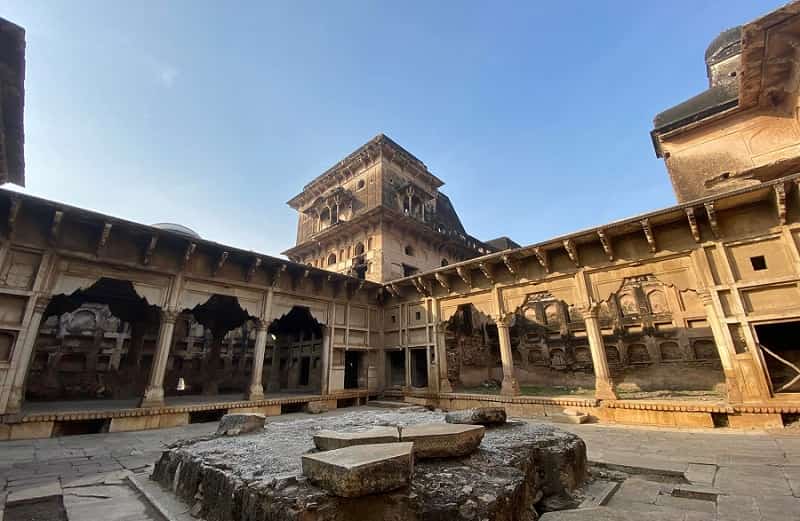
Chatta Rai Mukand Dass is a five-storey structure that was built by Mukund Dass who was Narnaul’s diwan during the rule of Shah Jahan, the great Mughal Emperor. Embellished with a number of rooms and pavilions, this building is amazing piece of architecture.
Attractions of the Place
The palace includes the famous Diwan-e-Khas which are decorated with huge pillars. Its marble floors look splendid. Though exterior of the building is very simple, the interior architecture is worth admiration. The meticulous planning with which the entire palace was built is brilliant.
The palace is famous for its spaciousness and the spectacular lighting that sparkle the interior of Chatta Rai Mukand Dass. The pavilions are constructed in the shape of eclipses. These pillars are the supporting structures for several halls that are present on various levels. A central court in the palace is surrounded by a huge verandah. The brackets and the pillars are made up of marble and impart immense beauty to the structure. A number of open terraces are present in the south direction. An old well is present at one of these terraces and was a source of water to the reservoirs present on different levels.
Another magnificent structure that is present near this building is a gateway that has several balconies. Prominent use of fountains and other water bodies to keep the surroundings of Chatta Rai Mukand Dass cool are present but do not function anymore. There are three underground tunnels, out of which visitors have the access to only one. This particular floor has provisions of the entrance of light inside the building. A network of tunnels were constructed, these passages led to nearby areas like Delhi, Mahendragarh, and Jaipur.
Other Attractions
Sarai Mukand Dass is a building that carries an epigraph. According to this epigraph, the building was constructed by Rai Mukand Dass who was a servant of Asif Kahn. The structure was completed under the guidance of Puran Mal.
According to local people, the place was visited by Emperor Akbar and one of his nine jewels, Birbal. It is the reason why this place is also known by the name Chatta of Birbal.
Gujari Mahal
- Location: Hisar, Haryana
- Period: Tughlaq Dynasty
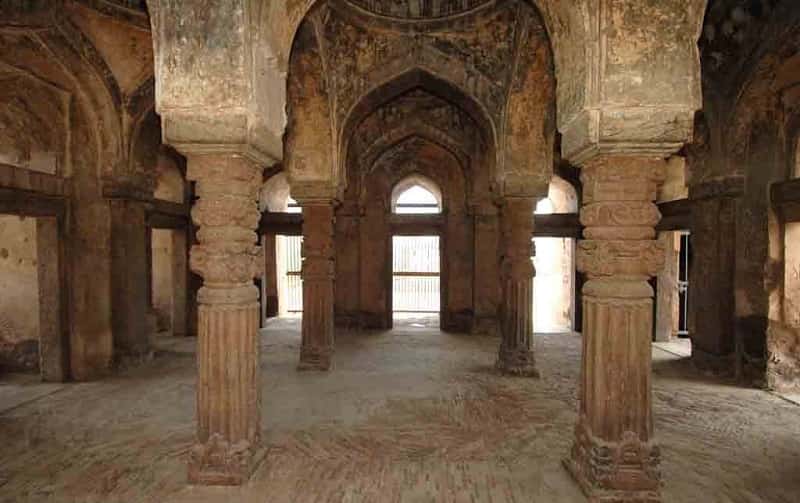
Gujari Mahal was constructed by famous Tughlaq ruler Feroze Shah who built this majestic palace for his beloved Gujari. The emperor met her on one of the hunting expeditions and fell in love with her. Though the palace is now in its ruins, yet one cannot stop himself from admiring its architectural beauty which is a showcase of Tughlaq style.
A platform that is built on an elevation and was meant for congregation of people is still intact. It is made form the stones that one admired one of the Hindu Temples. After the temple was looted and destroyed, its architectural structures were used in building of several Islamic monuments. This pavilion or “bardari”, as it is commonly called, is accessible by a series of steps. The platform is built in the form of a square and has beautiful arches on its sides.
Gujari Mahal has a number of other structures that adorn the complex of the palace. Famous for underground chambers, the palace’s roof has nine bays that have a dome in the form of a hemisphere to support them. While the roof is made in plaster of lime, the walls on the exterior of the palace are made up of red sandstone. The door frames are built in stone.
History of the Place
It is said that Feroz Shah, on one of his expedition, met a girl belonging to Gujjar tribe. The empire, who was captivated by her beauty, fell in love with her. After getting married, he asked her to accompany him to Delhi but she refused saying that being Gujjar, she will not be treated equal with his other queens. As she refused to com along, Feroz Shah, on returning, built a magnificent palace in her memory and named it Gujari Mahal.
Raja Harsh Ka Tila
- Location: Thanesar, Haryana
- Period: Kushana to Mughal Period
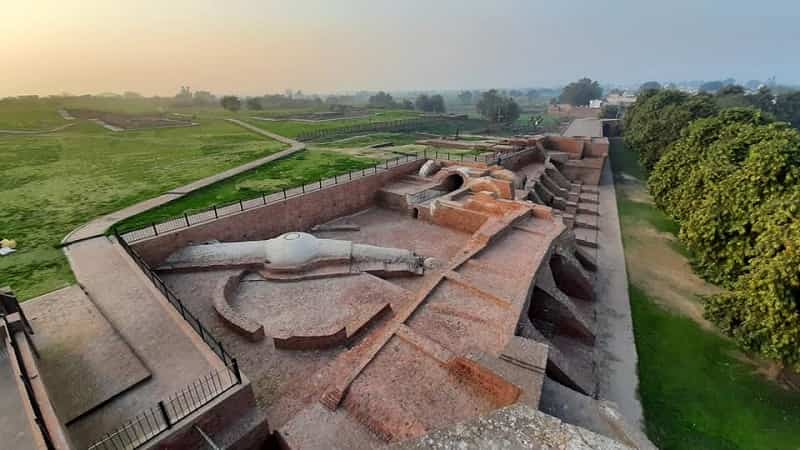
Raja Harsh Ka Tila is an old mound that is stretched over one kilometer and is about 750 meters wide. Built at an elevation of about 15 meters from the nearby area, the place showcases a number of cultures that have influenced it from centuries.
The place flourished in the periods between Kushana and Mughal era. In fact, the antiquities that have been recovered form the place belong to at least 6 cultural periods between first century AD and 19th century AD. These periods are Vedic, Rajput, Gupta, Kushana, Post Gupta, Vardhmana, Sultanate, and Mughal Period.
The most exclusive antiquities that belong to Kushana period include Painted Greyware. Polished Redware that belong to post-Gupta period have also been found here. A majority of brick structures at Raja Harsh Ka Tila also belong to this period. The other discoveries at the site include structural remains of Indo-Islamic era, a garden complex of Mughal period and a number of antiquities of different cultural periods.
Located in Kurukshetra district, Raja Harsh Ka Tila is a wonderful place for the enthusiasts of history and Archaeology.
Sheikh Chehli Mausoleum
- Location: Thanesar, Haryana
- Period: Suri Dynasty
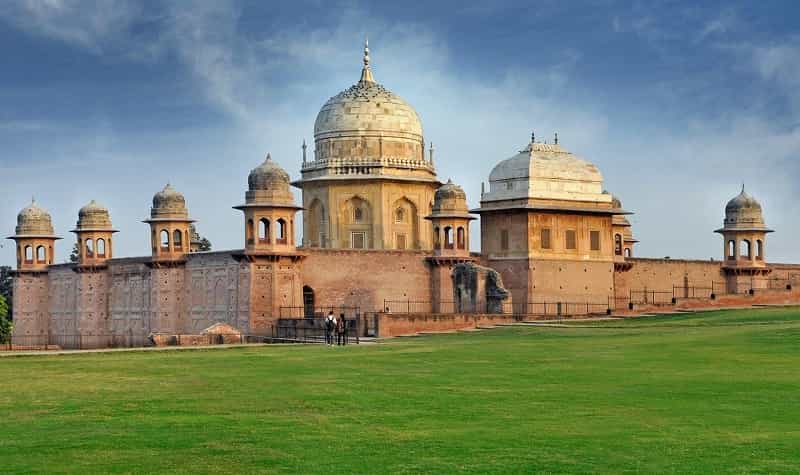
Built in the shape of an octagonal, Sheikh Chehli Mausoleum carries several marble arches. The windows are adorned with tracery screens. The central portion of the mausoleum has the tomb of Chehli. Standing on a terrace, the structure has nine openings that have built in arch shape. This piece of architecture is the storehouse of the antiquities that have been collected Thanesar and the nearby areas.
Barsi Gate
- Location: Hansi, Haryana
- Period: 1303 AD
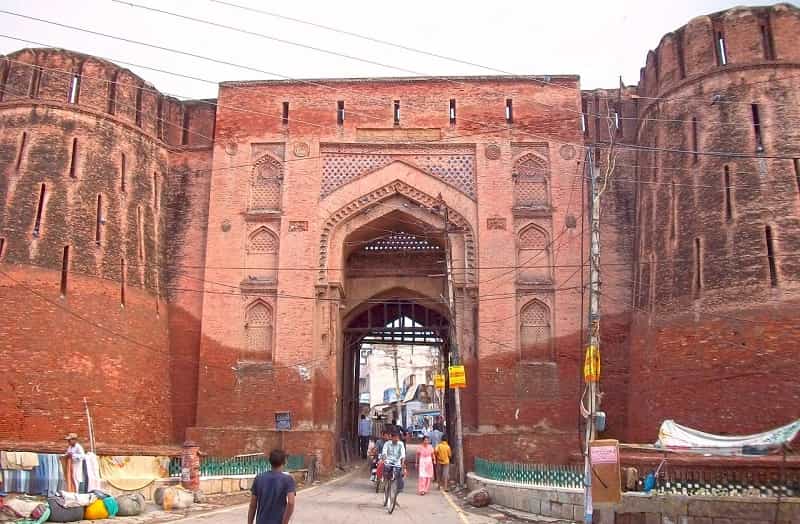
Barsi Gate was constructed by Famous ruler Alauddin Khilji. Built in Sultanate style of architecture, the gate was built as a massive defensive structure of Islamic period. It is an embodiment of the splendid architecture that was built at that time. The structure was repaired in the period of Ibrahim Lodhi in the year 1522 AD.
Barsi Gate is among the five gates of the Hansi walled city that are still in existence. The remaining four gates, namely, Umra Gate, Gosain gate, Delhi gate, and Hisar Gate, were destroyed with the passage of time. A Persian inscription is engraved on the pointed arch of barsi gate. Standing in the middle of a market, the structure, today, stands as an imposing gateway and walls that were used for protecting the City of Hansi. The height of the gateway is about 30 meters.
Chor Gumbad
- Location: Narnaul, Haryana
- Period: Tughlaq period
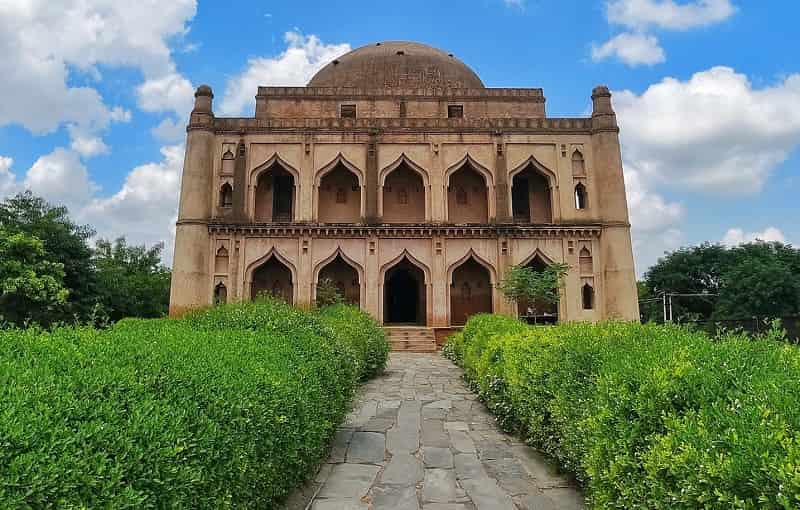
Commonly known by the name “Narnaul’s Sign Board”, Chor Gumbad was built on an isolated rock. The structure is built in the form of a square with 4 minarets that have been erected on the four corners of the square. Built by Jamal Khan, an Afghan ruler, the place is his tomb. It was the period when the city was ruled by Feroz Shah.
Chor Gumbad has got its name from the fact it was earlier a hiding place for thieves and culprits. The haunting look of the tomb entices the visitors. The S-shaped arches of the place have a striking resemblance to the tomb of Shah Wilayat. There is only a single chamber inside Gumbad. As one looks at building from outside, it appears as if it is a two-storey building, but the fact is that instead of second storey, there is an open Verandah. The dome is not very high which along with the arches are built in Tughlaq style.
As the passage leading into the place undergoes several twists and turns, this place is also known by the name of ” Bhool Bhulaiyaa” or a maze.
Ibrahim Lodhi Tomb
- Location: Panipat, Haryana
- Period: Lodhi Dynasty
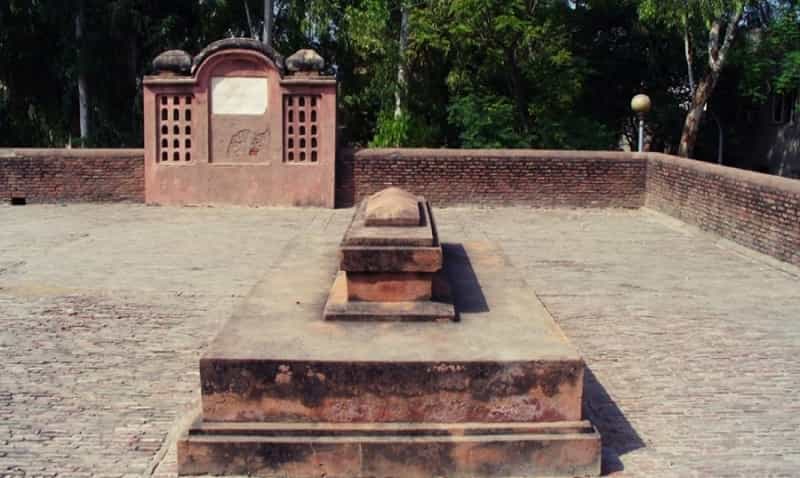
Ibrahim Lodhi, who ruled in 16th century, was a great Emperor who faced defeat at the hands of Babur, the Mughal ruler. After his death, a mausoleum was built by Sher Shah Suri and the tomb of the king was placed in it. This was called Ibrahim Lodhi’s Tomb is a commemoration of this valiant ruler who fought very bravely during the First Battle of Panipat in 1526.
The tomb is among the popular monuments of Haryana and is worth visiting by the tourists. Built in the form of a rectangular block, the tomb rests on an elevated platform. This high structure can be reached through a series of steps which are built with lakhori bricks. The tomb is a testament of the battle that was fought many centuries ago. The striking simplicity of the place is complemented by the presence of embellished pillars and carved arches.
Presence of vivid colors imparts a meaning to the architectural design of Ibrahim Lodhi’s Tomb. The stones that are the building blocks of their attractive place come in many colors like red, grey, white etc. The British rulers renovated this tomb in order to revive its old grandeur.
Ibrahim Lodhi’s Tomb is one of those tourist spots of Haryana that are visited by a number of people. The place carries with it immense religious importance and is especially important for Muslim pilgrims. The tourist department has taken several steps to refurbish the place. Hired guides are available who can provide historical information about the site.
Nearby Attractions
A number of mosques and forts are present in the vicinity of the tomb. Kabuli Mosque which was built by the Mughal Emperor Babur lies at a distance of about two km from Panipat. A number of Jain temples are also present that are worth visiting.
Shah Ibrahim Tomb
- Location: Narnaul, Haryana
- Period: 16th century
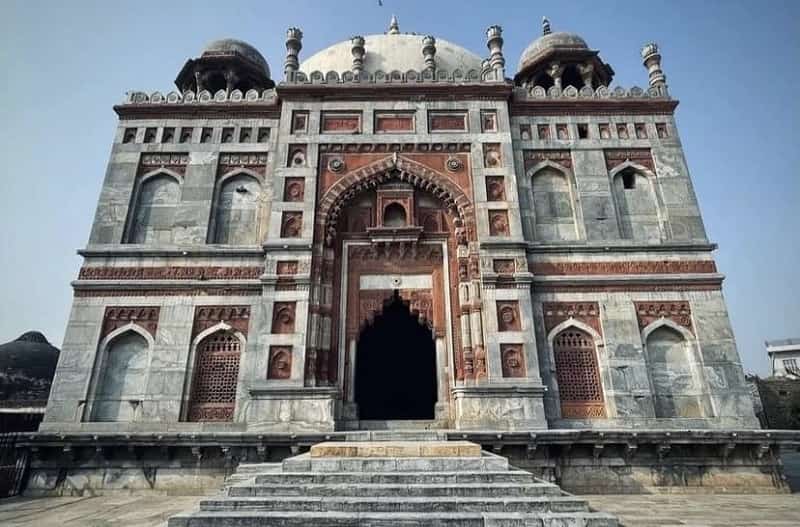
Shah Ibrahim Tomb was built by the famous Sher Shah Suri to pay homage to the services rendered by his grandfather named Ibrahim Khan. Ibrahim served as an official in the court of Lodhi rulers. Built under the guidance of Sheikh Ahmed, the monument is famous for its architectural beauty.
Sher Shah built the tomb between the years 1538 to 1545 AD. AS his grandfather breathed his last at narnaul, Shah Ibrahim Tomb was erected at this place. The most prominent features of this place include painted ceilings, bold arches, and cupolas. Traceries or the structures that are built to provide support to the glass windows adorn the interiors. Turrets or the vertical projections coming out for the main structure impart the architectural frame to the structure.
The tomb is built on an elevation. The entrance is located in the eastern direction. Another feature that is present in almost all the Islamic structures is the presence of Mihrab which is a semi circular structure present in the mosque wall. Mihrab is the direction in which Kaaba is located. It is enclosed inside carved panels and arched recesses.
The entrance of Shah Ibrahim Tomb resembles to that of a Hindu Temple. It is embellished with a number of carvings. The color scheme of the entrance is admirable. The front portion of the building or facade is adorned with relief features of red sandstone that are bordered with grey limestone. The octagonal shaped cupolas are the four corners are present on the dome. The tomb is an excellent example of the Pathan style and is characterized for excessive detailing. The carved pillars have lovely kiosks on them; the tiles in red, white, and grey colors, dexterous brush work, and high terraces that lead to double-storey building add richness to the structure.
There are two graves that have been placed here. Tomb of Shah Ibrahim is present in the interior of the building. The main dome is accompanied by a smaller dome resting on a drum. This octagonal drum has several small turrets in all directions. This historical place of Narnaul is a site worth visiting.
Tomb Of Khwaja Khizr
- Location: Sonipat, Haryana
- Period: 16th century
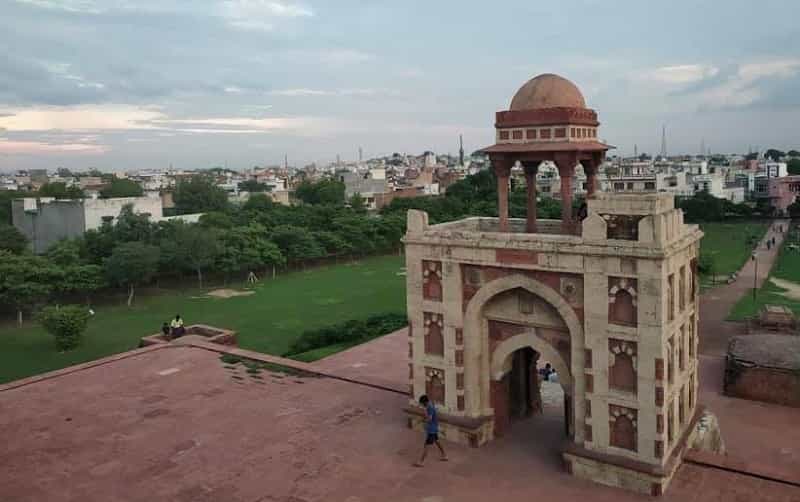
One of the exclusive features of the tomb is the presence of “kankar” blocks used to build the structure along with red sandstone. Tomb of Khwaja Khizr stands on an elevated platform. The side corners of the square shaped platform are strengthen with projections. One has to cross a number of steps in order to reach the entrance. The gateway has two openings that are adorned with arches. Several arched recesses and mouldings from art of the façade. The ceiling is decorative and comprises of floral designs that come in multicolor.
Tomb of Khwaja Khizr is one of the attractions of Sonipat and a site worth visiting.
Cantonment Church Tower
- Location: Karnal, Haryana
- Period: 1806 AD
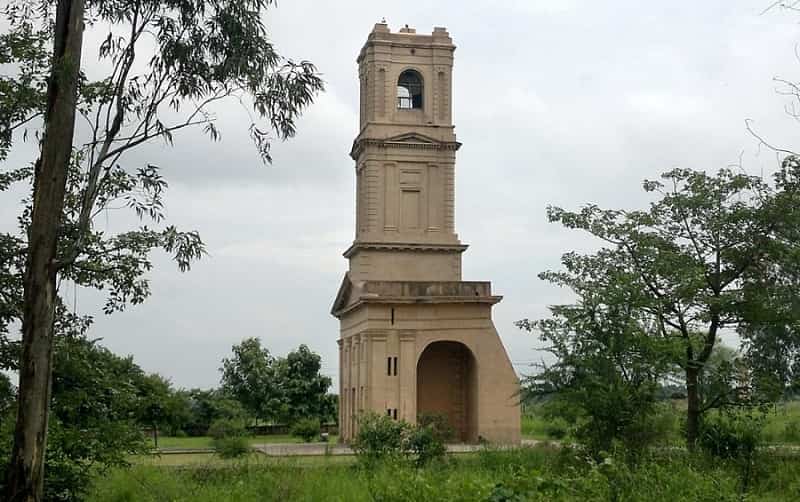
A part of St. James Church, Cantonment Church Tower was built in the beginning of nineteenth century. It is one of the oldest structures that are present in Karnal. The year 1841 saw the shifting of the cantonment to a place called Ambala. After this shift, dismantling of church took place.
This four-storey building has employed made up of Etruscan plaster on walls of the first floor. The topmost floor of this 100 feet high building is embellished with Roman arches that are built in semi-circular shape. The walls show paneling work and are made in plaster.
Firoz Shah Palace
- Location: Hisar, Haryana
- Period: Tughlaq Dynasty
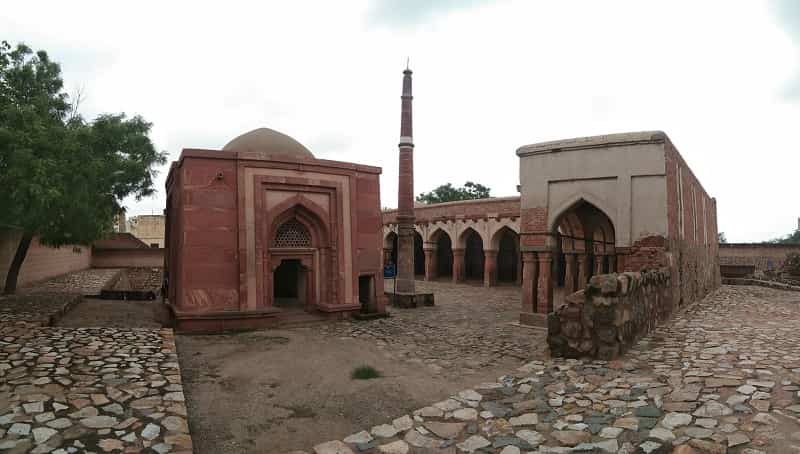
Firoz Shah Palace, the historical monument of Hisar district, was constructed by the Tughlaq Emperor Firoz Shah. Built in rubble masonry which is covered with a plaster of thick lime, this magnificent place is embellished with several pillars made up of sandstone that are carved. These pillars are actually taken form Hindu Temples and act as supporting structure to the arches.
Attractions of the Place
The palace complex has a huge courtyard which if flanked by two to three storeyed structures. Feroze Shah Palace has a huge wall in the western direction and has a passage that leads the visitors from steps to terrace. There are several bastions that are present on this pathway. Other magnificent structures that are present here include a pillared hall meant for connection to the rooms and a number of cells. The eastern portion of the palace has red sandstone structures. One of the terraces is adorned with a source of water and is called lotus-tank. Arches have ornamental designs on them. The plaster is worn out from most of the places.
The building of Feroze Shah Palace is spectacular. The place is worth visiting by the enthusiasts of history.
Jal Mahal
- Location: Narnaul, Haryana
- Period: 16th Century
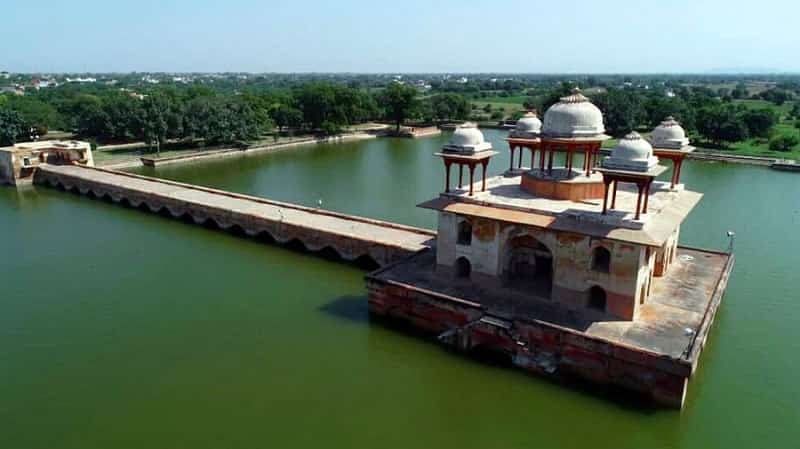
Located in the district of Mahendragarh, Jal Mahal was built by a commander named Quli Khan. It is a type of pleasure place that is located amidst water. The palace is flanked by a tank which is commonly called Khan Sarovar and is known for the combination of Indian and Persian architecture.
One can enter Jal Mahal via a gatehouse which is situated in the north direction. The base of the palace is built in the shape of the square with four corners adorned with small chambers. These chambers are two-storey structures. The upper storyes are accessible with a series of steps or staircases two of which are constructed facing north direction and the other two in south direction. The central square chamber has a cupola which is crowned with a big dome. The side chambers too have cupolas. The building was constructed in the period of Akbar in the years 1590 and 1591 AD. The construction of the tank that surrounds it got completed in 1593.
The interior of Jal Mahal is lavishly decorated. The ceiling has paintings that are decorated with gold colors. There are geometrical patterns and motif-designs are so captivating that the visors remains spell bound most of the time.
As the tank has remained dirty and dry for years, Haryana Government has taken steps to clean and refill the empty tank. It took almost 15 days to fill the tank. A small channel was constructed for this purpose. Revival of the tank was done to attract more tourists. The number of foreign tourists that visit Jal Mahal has increased manifold after the cleansing and filling project.
Shah Quli Khan’s Tomb
- Location: Narnaul, Haryana
- Period: 16th century
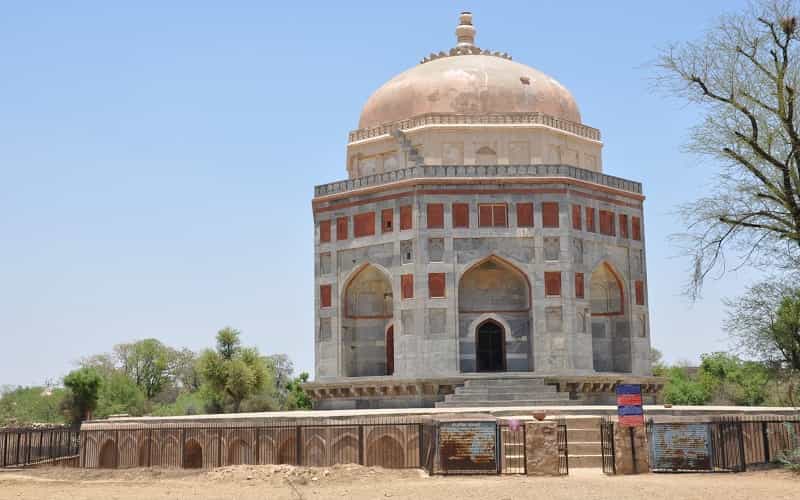
Shah Quli Khan’s Tomb was built by Quli Khan in the years 1574-1575 during Mughal period. Quli Khan was Narnaul’s governor at the time when Akbar was the ruler. Though built for his father, the tomb was also the burial site of Khan whose tomb was placed inside this structure.
The base of the tomb is built in octagonal shape and constructed using a combination of grey and red sandstones. An arched gateway that was built several years after the construction of the tomb leads one to the garden complex of the tomb. Shah Quli Khan’s Tomb was one of the earliest pieces of architecture that were built in the reign of Akbar. A large white dome that sits at the top is truly admiring. The tomb carries a height of about 42 m; there are, in total, 28 arches on each side. Terraces have been built to give the appearance of a gallery; the mausoleum is located under a vault and is accessible by a series of steps.
The inscriptions at Shah Quli Khan’s Tomb are written in Naksh and Persian scripts. The octagonal plan of the place is strikingly different from that of octagonal plans of Lodhi and Suri structures. Absence of Verandah in Quli’s tomb is one example in this regard. The lower storey of the tomb is built in white marble while the upper one is coated with a plaster of lime. The remarkable beauty of the place makes it one of the pleasure pavilions of its time.
FAQs
Q1: Can I visit Haryana monuments with children?
Absolutely! Haryana monuments are suitable for visitors of all age groups, including children. However, it is advisable to keep an eye on the children and ensure their safety during the visit.
Q2: Are there any restrictions on dress code at Haryana monuments?
While there are no specific dress codes enforced at Haryana monuments, it is recommended to dress modestly out of respect for the cultural and religious sentiments associated with these sites.
Q3: Can I hire a local guide at the monuments?
Yes, hiring a local guide is a great idea to enhance your experience and gain deeper insights into the history and significance of the monuments. Local guides can provide valuable information and interesting anecdotes.
Q4: Are there any souvenir shops near the monuments?
Yes, many monuments have souvenir shops nearby where you can find a variety of locally made handicrafts, artwork, and mementos to commemorate your visit.
Q5: Are there any food and refreshment options available near the monuments?
Yes, most monuments have food stalls or nearby eateries where you can relish local cuisine and refreshments. It’s always a good idea to carry water and snacks, especially if you plan to spend an extended time exploring the monuments.
